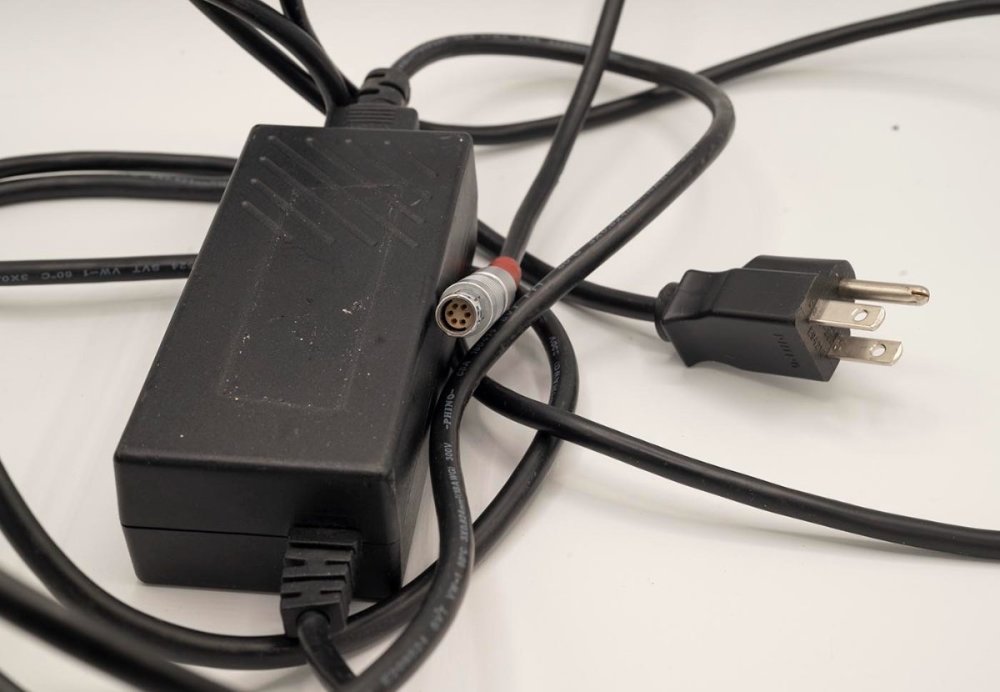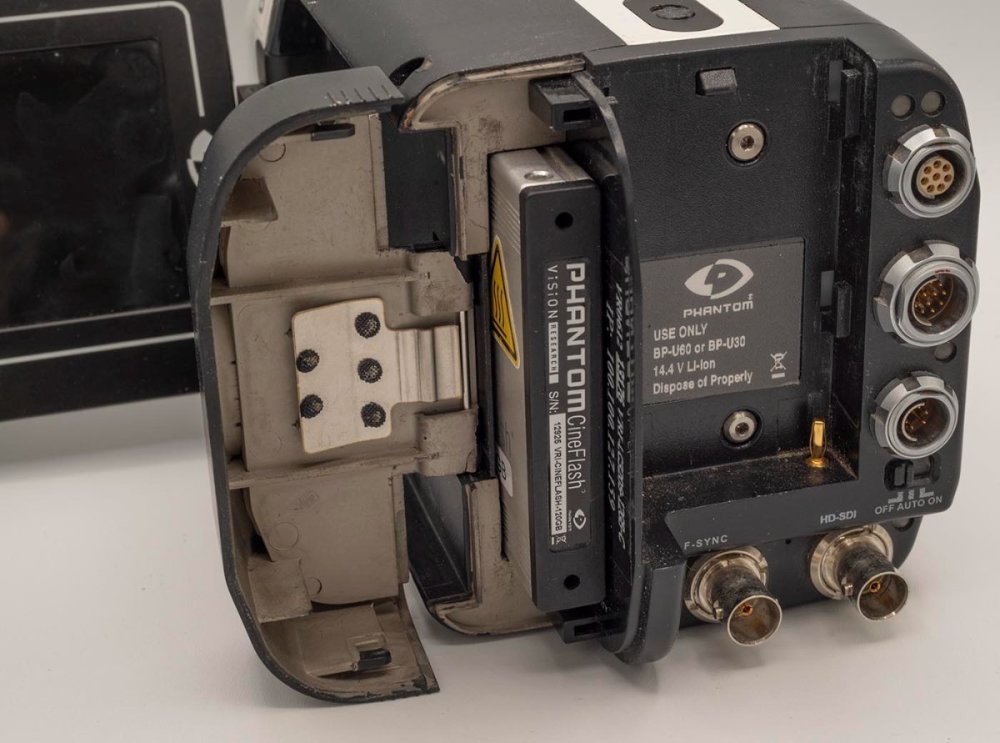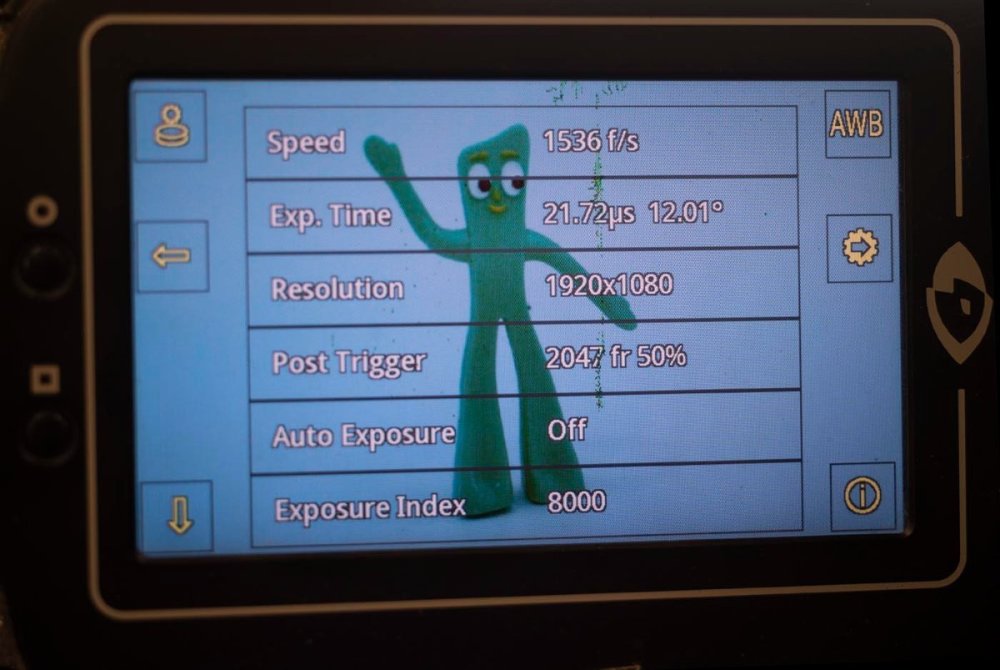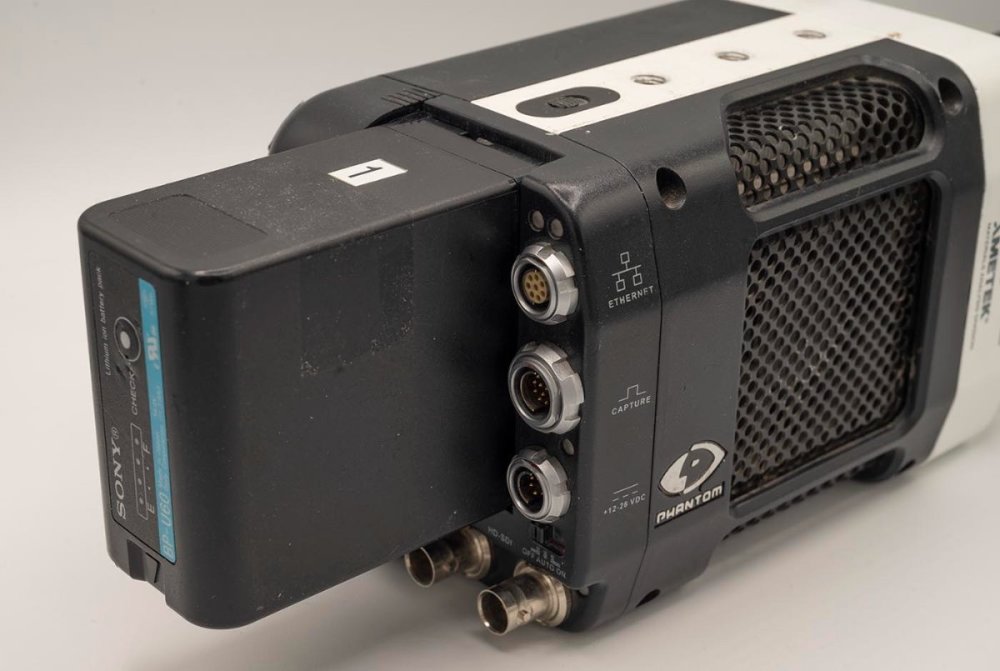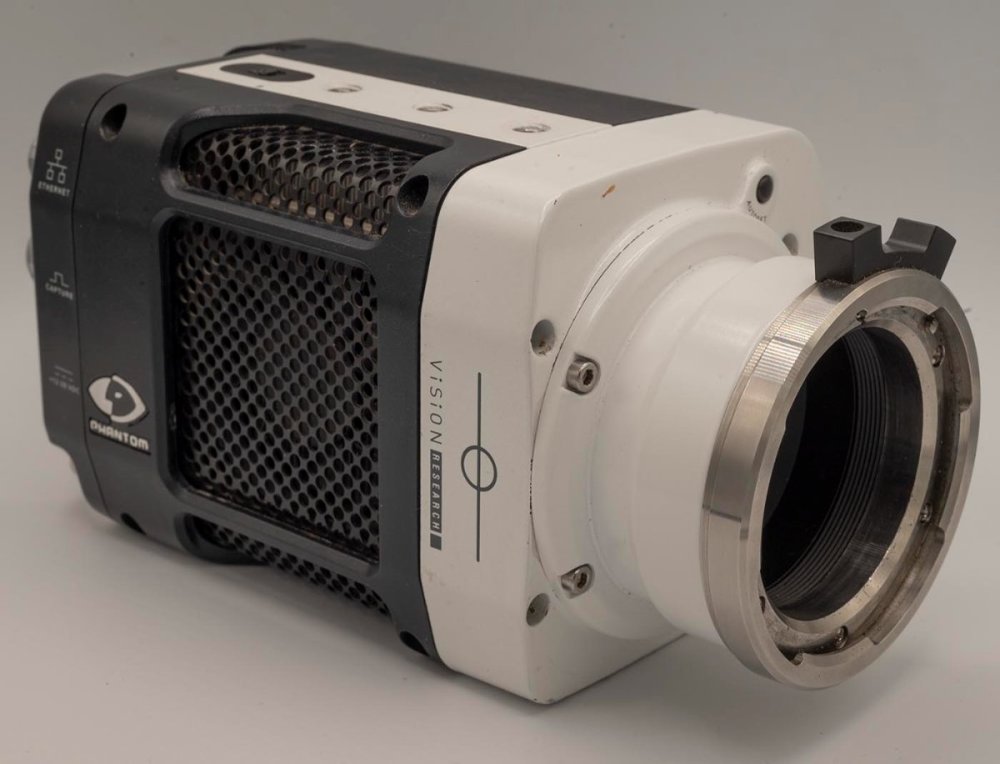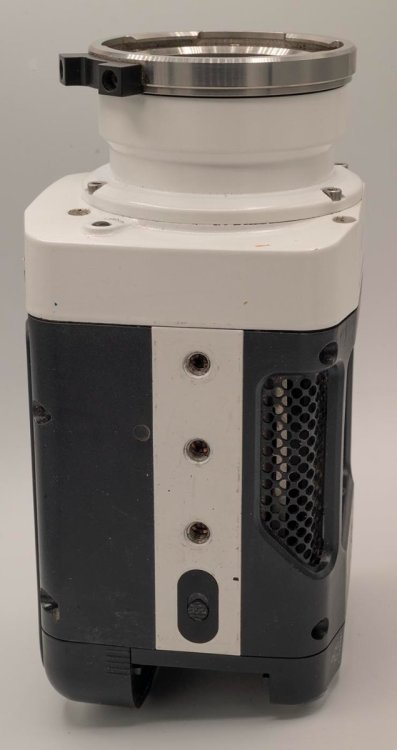All Activity
- Past hour
-
Reduced price £6500 (plusVAT for UK buyers).
- Today
-
I am sure there are a couple of A-Minima owners in the US who would want to test your prototype.
-
Here is a very, very basic but easily overlooked thing. I can't tell from the thread if your mic is direct to your camera audio port or if you are listening to the result in Resolve or another app. Make sure your desktop OS is configured correctly. I'm sure you have not done this but to be sure, check the desktop OS audio settings. It is the primary cause of audio hiss in the world (I believe 😄).
-
Hi all and my compliments to the developers. Gorgeous site! I'm so happy to have found it. We shoot short wildlife docs in Dallas for our dallasnaturechannel site. Edit in Resolve. The XF605 has been ideal for macro video. The AF is incredible, even through Canon diopters 500D, with and without a teleconverter no less. Browser Remote through a cell allows hands off zoom too! The imagery is gorgeous as long as the dynamic range is reasonable. So... I just sold a camcorder and EOS R, and then replaced them with a Z Cam E2-M4 and a Sigma 60-600. Then shot RAW to a Ninja+. My god! The dynamic range of RAW is drastically better than the 605's. We can shoot egrets in full sun without losing feather detail! 😮 I'm wondering if I am not getting the most out of the 605, or is RAW just that much better? Am I possibly getting the 605 editing workflow wrong? I use Canon's LUT or sometimes just grade to maximum beauty. I shoot Log3 - cinema gamut. If RAW is that much better, would it make sense to sell our beloved 605 for a used C300 Mk II? The C300 and a zoom equivalent work out to a similar cost. The C300 has similar autofocus, browser remote, etc. Any thoughts?
-
I still think the camera can't format a new Cineflash (well, a Cineflash with an unformatted replacement SSD module installed in it.) Oddly enough, once it IS formatted, and you decide to erase all the files on it in the camera menu, what it does is....format the drive! But you can't get to that menu choice with an unformatted Cineflash. That's some catch, that Catch-22. We were finally able to format the drive with the Cineflash Dock hooked to an old laptop with an external SATA port and the proper cable, running Linux. Previous attempts, with several differences, to just format the drive had not created a drive that worked in a camera. So we used Clonezilla to create a backup image of the working Cineflash, then restored that to the repaired Cineflash. That worked! Now we have a backup image we can use to do that whenever needed. At some point I'm going to solder on a second connector to the board inside the repaired Cineflash and see if we can make it a 240GB model by putting two SSD modules in it. There's an interesting quirk with the EF mount - it's spectacular that it includes electronic aperture control, but the way it works is, every time you change the aperture, it opens up fully, then stops back down to the selected aperture. It's like they don't trust it to know where it is and have to "re-home" it each time you adjust it. Weird, but not too annoying once you understand what it's doing. Duncan
-
The B&H 200 appears to have an interlock so it won't run if the door is open. Does anyone know anything about this? It may be jammed in one of my cameras (doesn't run) or intermittent in the other (tends to jam until door is opened). thanks! --Gary
-
-
-
Not many people wanting to chime in, eh? Well maybe a little camera-porn will, er, stimulate the discussion. Duncan
-
I got an almost pristine-looking B&H 240 camera a few months back and it has noticeable gate weave. Otherwise, surprisingly, such a great looking image with the Wollensak lens I used on it. Absolutely crystal clear and sharp as a tack despite some weaving. If I can figure out how to steady the image that would be great. I used DR to steady up the image in post. Different camera of course but I wonder if the B&H 16mm cameras that were made for the amateur home movie market have less stable registration generally than similar cameras in that class. I won't be getting any more 240s any time soon.
- Yesterday
-
Revere 36 has much better registration and is much more reliable than B&H 200. They're fairly easy to find on the big shitty auction site. You'll likely have to lube the camera once you get it. I've shot at least 70 mags of film in B&H 200 (~3 different cameras) and probably 20 in Revere. Revere blows away the 200. You can buy 2R film from FPP (or from EK if you're willing to buy 20 x 400' rolls) and have retrocine.com load it into mags for you. Then send it to Spectra for developing and scanning. FPP sends their film to Spectra. If you send it directly, you'll save a bunch of time. I have a couple thousand feet of 2R Tri-X 16mm that I'm willing to sell for $1.75/foot 1000' on core. There's nothing wrong with FPP. I don't mean to imply that.
-
Leo Maco started following Alexa 35 with Hawk V-Lite 1.3x
-
Alexa 35 with Hawk V-Lite 1.3x
Leo Maco replied to Neel Potgieter's topic in Lenses & Lens Accessories
Hi Neel, Do you have any updates on this setup? Thinking about using a similar setup and curious to hear how your tests went. Thanks! -
Albion Hockney started following Sony Fx9 iso doesnt affect anything at all on dual iso mode
-
Are using the M-LUT in camera. for the FX9 you need to turn M-LUT on to see the changes as far as I know. if that doesn't work then there might be another setting causing the issue or less likely an issue with the camera. Sony menus are difficult. just keep messing with it. are you using an external monitor or do you have an SDI monitor you can try as well?
-
μεταμορφώσεις
Jeff Bernstein replied to Jeff Bernstein's topic in Students, New Filmmakers, Film Schools and Programs
Two early psychopaths in English Literature Titus. What shall we do? Let us that have our tongues Plot some device of further misery To make us wonder’d at in time to come. Clever vile principals such as Richard III and Iago scorn to get their hands dirty, preferring behind-the-scenes manipulation to engineer their criminal ends. Apparently the first “hands-on” Chigurhic psychopathic principal in English Literature is Aaron the Moor in Shakespeare’s Titus Andronicus. Aaron. I have done one thousand dreadful things as willingly as one would kill a fly, and nothing grieves me heartily indeed but that I cannot do ten thousand more. Thus speaks a brutal conspirator and murderer, cruelly mocking and nonchalant in his evil. Anton. I wouldn’t worry about it. * * * Lodovico in The White Devil is English Literature’s second full-blown, bloody-handed, nonchalant psychopath. In 1.1, he faces banishment from Rome due to his many offences including bloody murder, and to his enemies he vows reprisal. I’ll make Italian cut-works in their guts If ever I return. By “cut-works” Lodovico promises to use his sword to carve out elaborate lacelike wounds in human bodies of his choosing. Gasparo. Oh, sir. Lodovico. I am patient. (“The truly vindictive are as patient as saints.”) I have seen some ready to be executed, Give pleasant looks, and money, and grown familiar With the knave hangman: so do I. I thank them, “I don’t care if I live or die,” Lodovico is saying. “I thank them [for their hassle]”—recalling the bleak bravado of “Go ahead and shoot, you’ll be doing me a favor.” And would account them nobly merciful, Would they dispatch me quickly— Nihilist doublespeak—“dispatch” : (2) Let them kill me when they will. Lodovico is smart—not the smartest of the principals of The White Devil, but smart enough to invade enemy lines and wage a successful campaign of terror. Yet in the end he’s not smart enough to elude heavy physical penalty for his deeds. Even so he pronounces himself satisfied. Why? He left a series of corpses in his wake. For some, Revenge is worth the punishment. * * * In his first dialogue scene of Shakespeare’s Titus Andronicus, Aaron offers the following advice to two men : You two are in love with a young woman? Why chase her? Just rape her. That what you cannot as you would achieve, You must perforce accomplish as you may. Later, Aaron explains how much he hates Rome : Vengeance is in my heart, death in my hand, Blood and revenge are hammering in my head. The thought of mayhem sexually excites some conspirators;—the more grotesque the crime, the hotter the feeling? Aaron. This is the day of doom for Bassianus; His Philomel must lose her tongue today, Thy sons make pillage of her chastity, And wash their hands in Bassianus’ blood. Tamora. Ah, my sweet Moor, sweeter to me than life! Aaron. No more, great empress. Bassianus comes. No Hays Code back in Shakespeare's era; so—Aaron, facing his end : Tut, I have done a thousand dreadful things As willingly as one would kill a fly; And nothing grieves me heartily indeed But that I cannot do ten thousand more. Similar to indomitable Tuco in The Good, The Bad and the Ugly, Aaron does not go gentle into that good night : Aaron. If there be devils, would I were a devil, To live and burn in everlasting fire, So I might have your company in hell But to torment you with my bitter tongue! Lucius. Sirs, stop his mouth, and let him speak no more. And Aaron’s last word in the play? If one good deed in all my life I did, I do repent it from my very soul. * * * Titus Andronicus appeared soon after The Spanish Tragedy. Apparently it was Kyd’s play that featured the first colossally shocking moment on the English stage. Scene 2.4— Horatio. What, will you murder me? The answer? Lorenzo. Ay, thus, and thus! These are the fruits of love. Witnessing this, Horatio’s sweetheart Bel-imperia turns hysterical—hysterical panic appears also in White Devil, 5.2, and Titus, 2.3 : O, save his life and let me die for him! O, save him, brother, save him, Balthazar! I loved Horatio, but he loved not me! Murder! Murder! Help, Hieronimo, help! Yes—Lorenzo the knifeman is her brother. Kyd’s box-office success spawned an entire genre (similar to the flood of Tarantino clones after Pulp). In Titus Andronicus, Shakespeare attempts to outdo the traumatic horror of The Spanish Tragedy. Example : Chiron. Drag hence her husband to some secret hole, And make his dead trunk pillow to our lust. Come, Mistress, now perforce we will enjoy That nice-preservéd honesty of yours. And their mother’s blessing to her evil sons? Tamora. Therefore away with her, and use her as you will; The worse to her, the better lov’d of me. In Titus Andronicus Shakespeare indeed outdoes the horror of The Spanish Tragedy, yet Kyd’s abrupt tone-shift (Romeo and Juliet to A Clockwork Orange) remains Triumphant as a foremost structural wonder, a magnitudinous moment in technics. Well-alert to Kyd’s genius, Shakespeare engineers his own broad tone-shift in Titus;—he shows us the spectacular horror of a freshly-raped Lavinia bleeding with sliced-off hands and cut-out tongue, and cuts to the Tarantino absurdity of three men squabbling for forty-odd lines over which one shall willingly chop off his hand as a ransom to be sent to the king. * * * In Titus Andronicus, a sort-of Roman History play with elements of revenge tragedy, Shakespeare gave the audience what it wanted—the Elizabethan version of Noe&Haneke horror. Long ago Scroob remarked that Sophocles is punishing the audience with Art in Οἰδίπους Τύραννος, 1237–84. Similarly, Shakespeare ensures to keep delicate Lavinia’s mangled presence onstage for much of the rest of the play, a Situation possibly as unbearable to the original audiences as the nine-minute horror in the underpass in Irreversible. Scrooby theory : The audience screams elicited by both The Spanish Tragedy 2.4 (Horatio murder) and Titus Andronicus 2.4 (Lavinia reveal) are prototypes for the final audience scream of Silence of the Lambs. Shakespeare is far from done. Example—5.2 : Titus. Hark, wretches! how I mean to martyr you. This one hand yet is left to cut your throats, Whiles that Lavinia ’tween her stumps doth hold The basin that receives your guilty blood. And remember, kind reader, Atreus feeding his brother’s two sons to his hungry brother . . . ? Why might the audience bear to sit watching the horrible scenes of Titus? One reason : Noe&Haneke horror is not fantasy—it’s real and everyday, as Vittoria in The White Devil exclaims, near the end of her life : Vittoria. Oh me! This place is hell! * Caligula 32. Animum quoque remittenti ludoque et epulis dedito eadem factorum dictorumque saeuitia aderat. saepe in conspectu prandentis uel comisantis seriae quaestiones per tormenta habebantur, miles decollandi artifex quibuscumque e custodia capita amputabat. On ordinary days, while he was lunching he’d have prisoners decapitated in his presence. -
Dears, I recently moved my old Steenbeck into my new apartment and noticed upon powering it up that the speed control flipper had become loose, causing the newly-untensioned flipper to freely slide around from one speed to another. While this hasn't issue hasn't impeded the machine's functionality, I nonetheless took a look under the hood and noticed that the metal disc that holds the flipper unit in place had become loose from the industrial adhesive that was applied to it at factory. To fix this, I'd like to re-adhere the metal disc to the flipper unit, but am curious as to whether anyone who has (or hasn't) encountered the same issue with their machine may suggest a particular glue to solve the problem, or suggest an alternate solution. Best, C
-
Arthur Sanchez started following REX 4 Super 16 FOR SALE and WARNING: Dr. Bolex not returning camera
-

WARNING: Dr. Bolex not returning camera
Arthur Sanchez replied to Alexander Boyd's topic in Cine Marketplace
Hey Alexander... Dr. Bolex here... did you ever get your camera??? How were you communicating with me??? I have no record of you on my books... what email were you using??? Let me know Arthur -

WARNING: Dr. Bolex not returning camera
Fabian Schreyer replied to Alexander Boyd's topic in Cine Marketplace
Well, if you still need a Bolex, there is one for sale right now: -
Full conversion to super 16 - Bayonet Mount - with PL Adapter - Variable Shutter 10X Viewfinder - F2 58mm PL Lens $3,875.00 Plus Shipping - Make Offer if interested https://www.drbolex.com/copy-of-cameras-for-sale
-
Matty deveson joined the community
-
XTR computer faults are incredibly rare.
-
μεταμορφώσεις
Jeff Bernstein replied to Jeff Bernstein's topic in Students, New Filmmakers, Film Schools and Programs
Bittersweet perversity In innumerous Hollywood films from the earliest days to now, the “spark and fire” of love (Hamlet, 4.7.129) often leads to climactic happiness and an uplifting end-credit track. One of the fine users of Quora explains for us : “You are simply attracted to a person or you’re not.” As Juliet explains, true love is out of one’s control : My only love sprung from my only hate, Too early seen unknown, and known too late! Prodigious birth of love is it to me That I must love a loathéd enemy. (1.3.152-5) * WARNING : In the skewed world of Shakespearean-era revenge tragedies, uncontrollable love—simple attraction, the prodigious birth of what the heart says—often ends in disaster. * The White Devil Vittoria. I do protest, if any chaste denial, If anything but blood could have allay’d His long suit to me— (1.2.284–6) Vittoria explains to her mother that her forbidden love for the Duke is out of her reasonable control, and only her death could have stopped her attraction; thus her infidelity is justified by the immutable laws of Mother Nature. Alas, Vittoria’s attraction leads to her ultimate end—a sword runs through her. With her last breath, she reflects : Vittoria. Oh, my greatest sin lay in my blood! Now my blood pays for ’t. (5.6.240–1) Unfortunately, this being The White Devil, her death gets worse for her—Vittoria expires in a hell of psychological torture : Vittoria. My soul, like to a ship in a black storm, Is driven, I know not whither. (5.6.248–9) * The Revenger’s Tragedy The devil-may-care character of Junior Brother ravishes a married woman in an especially vile and violent manner, but his explanation of why he did the deed is remarkably untroubled and relaxed—the young man simply tells the simple truth as he sees it : Second Judge. What mov’d you to’t? Junior. Why, flesh and blood, my lord. What should move men unto a woman else? (1.2.47–8) Junior’s last words before facing capital punishment are perversely mock-heroic— My fault was sweet sport, which the world approves; I die for that which every woman loves. (3.4.81–2) * In Shakespearean-era revenge tragedies, beware of love. Nature leads to disaster. -
Sorry Alex, all gone. Best,





